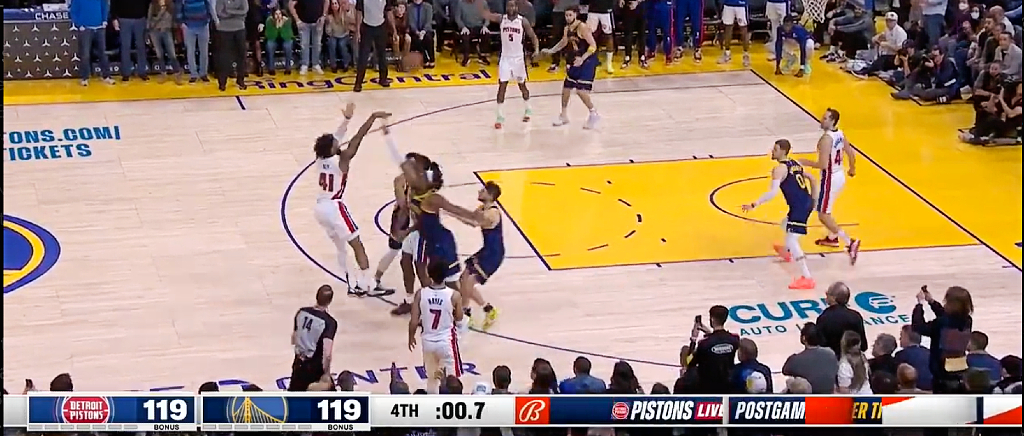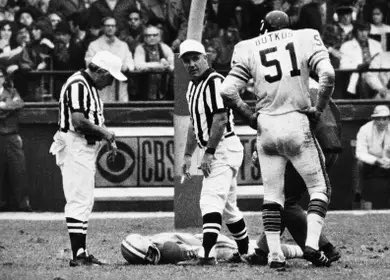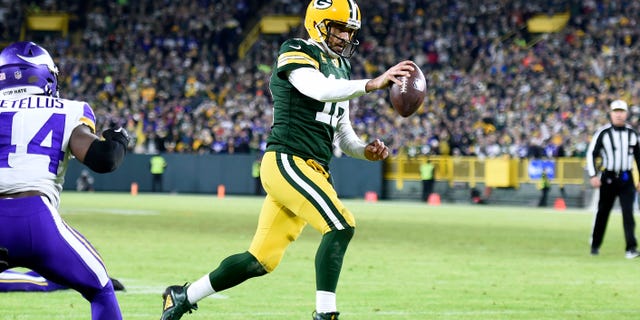IT’S ALL HAPPENING!
by John Walters

Is Anyone Out There Doing Their Jobs?
Allow me to save you thousands of dollars and hundreds of man-hours by distilling reporting into one sentence, a command, actually: ANSWER THE SIX QUESTIONS.
That’s the job, folks. That’s all there is to it.
Who?
What?
When?
Where?
Why?
How?
That’s it. That’s all every story, and any story, needs. The rest of it is just garnish. Alas, far too often, and particularly this week in terms of the Damar Hamlin saga, most of the meal has been garnish. And a couple of sports media reporters that I know of, people with national platforms, lapped up the garnish as if it were a meal and then walked back to the kitchen to shake the chef’s hand and exclaim, “Bravo!”
And that is sad.
Who? What? When? Where? Why? How?
We must begin with ESPN for a couple of reasons: 1) The incident occurred on its airwaves and 2) ESPN proclaims itself as the “worldwide leader in sports” and this was easily the biggest sports story of our nascent year.
Three of the six questions are elementary and any of the millions of Americans who had tuned in to Monday Night Football to see the Buffalo Bills at the Cincinnati Bengals could answer them within seconds of the collision between Tee Higgins and Damar Hamlin taking place. In fact, if you’re paying attention, you’ll notice that I already answered them in that previous sentence.
WHO: Bills and Bengals, specifically Hamlin and Higgins.
WHERE: Cincinnati, specifically Paycor Stadium (we miss the days before naming rights were re-awarded on a seemingly annual basis…we miss the days before naming rights, period)
WHEN: Monday Night Football, specifically the first quarter of the game.
It’s the last three questions that distinguish true reporters from hacks, and this is where ESPN failed miserably, as have those who rushed to pat them all on the back.
WHAT: Well, there was a seemingly innocuous tackle in which Hamlin brought Higgins down but Higgins helmet appeared to strike Hamlin directly in the chest. Higgins stood up after the tackle, then a moment later appeared to do a trust-fall backwards. Bills medics observing immediately noticed that something was amiss and communicated to one another that they needed to reach Hamlin immediately.
ESPN, as the rights-holder to this game, had licensed access to the footage. And yet, as if to spare our delicate, handfan-waving sensibilities, opted to not air the footage. Which is completely irresponsible.
Let me take a moment of digression here:
No person with an IQ higher than the combined score of the game at that moment (7-3) needs to be reminded by Ryan Clark or anyone else that a human life is a precious thing. Anyone reporting on the event and sticking to the six questions, and also endeavoring to answer those six questions (i.e., his or her job) is no less empathetic or humane than anyone who makes a public showing of support for the recovery of Hamlin. Or prays on air on his behalf, as Dan Orlovsky did. The fact that you are answering those six questions, or attempting to, does not make you any less sensitive. It simply makes you a professional.
In a sentence: ESPN needed to air the hit. Not on a loop. And not to be exploitative. But to inform its audience why we were at this impasse and to illustrate what had happened. Even if just airing it once per SportsCenter. So, thousands or tens of thousands rushed to Twitter or TikTok or YouTube to uncover the footage that someone in Bristol (and perhaps the league offices in NYC) didn’t want us to see. It’s the same reason Pentagon officials during Vietnam blew their tops when bodybags were shown being loaded onto planes in Saigon. It’s not the war they are against; it’s the chance that transparency might just turn public opinion against the war. That is what the Pentagon or the NFL or even ESPN is really at odds with.
HOW: The answer to this question often overlaps or gets confused with WHY. For our purposes, I like to think of HOW as “HOW DID IT HAPPEN?” and WHY as “WHY DOES THE AUDIENCE CARE ON A VIEW FROM 30,000-FEET LEVEL?” That is, what are the greater issues at play here beyond the incident itself.
So, back to HOW: My guess is that neither Scott Van Pelt nor Ryan Clark nor Lisa Salters nor any of the team-based reporters for ESPN.com (Have you noticed how they’re all so young? If you’re curious as to why, you may want to think about salaries versus experience and the potential risks ESPN exposes itself to by putting such relatively inexperienced reporters on air on a story of such magnitude, where a life literally hangs in the balance). Anyway, how a seemingly typical NFL hit led to a player not breathing is not a question for anyone but a medical professional to address. Of course, Van Pelt, a consummate professional, was above speculating as to the cause of Hamlin’s distress. That’s smart. But where his producers hung him and the rest of ESPN out to dry was by not being able to locate a single medical professional to opine on this.
America is watching. America is asking, What about that hit led to this dire predicament. HOW? And ESPN is not even pretending to bother to care to answer that question. ESPN brings on its Bills reporter, who talks about how popular Hamlin is in the locker room. That’s great, but if Hamlin were a complete ass, would she have mentioned that? Moreover, is any of it relevant in the moment? No. It’s garnish. It’s tap dancing as ESPN waits for some real news.
CNN, not a sports channel per se, was up against the same after-midnight-on-a-Monday-night constraints that ESPN was, and yet CNN was able to located two emergency room physicians who spoke directly, yet with restraint, about what the most likely medical causes of Hamlin’s cardiac arrest were. And it wasn’t wild speculation to say that Hamlin had gone into cardiac arrest. After all, Bills staffer were seen giving him CPR. This was not off-the-cuff speculation by these physicians with decades of experience. It was an educated diagnosis, and it was dispensed with the caveat that they did not know for sure. This is not irresponsible. It is informative.
WHY: This is almost always the most difficult question to tackle. But before we do, let’s address something that should be common sense but for the sake of the Twitterati, needs to be said. Every time you return from a commercial break, whether you’re Van Pelt or CNN or anyone with an FCC license, you repeat the headline (“A Buffalo Bills player appeared to suffer a life-threatening injury during MNF”) and you provide the latest update on Hamlin’s condition. You note that the hospital where he is staying will not be holding a press conference and you assure your audience that as soon as any credible source is able to provide an update, you will share it.
Then you answer the WHY? Why is this important? Well, for context, it has been more than 50 years since the one and only NFL player to die in the course of playing a game, Chuck Hughes of the Detroit Lions, did so. You note that these are two of the top three teams in the AFC and that the incompletion of this game creates a conundrum for the NFL, in terms of playoff seeding, with one week remaining in the season. Such a situation is, as far as we know, unprecedented.
Is that more important than the life of Damar Hamlin? Of course not. Does that need to be repeated to us as if we are five year-olds? I think not. Every time there’s a serious traffic accident, someone is taken to the hospital and maybe they die en route, or were dead at the scene, but the police there are still responsible for creating an avenue for traffic to continue. The motorists do not all turn off their engines, alight from their cars and form a prayer circle. And the police are not doing their jobs if they don’t put up cones and find a way for traffic to continue. They don’t pause, assess the gravity of the accident, and then decide whether or not to do their jobs. Because it’s not a policeman’s job to pray or to remind other motorists how precious life is in that moment. It’s his job to make sure the paramedics are able to access the scene, get in and out as soon as possible, and then to keep traffic moving. This is why the first call is after an accident is to police and paramedics and not your pastor.
*****
The true irony of the day, and it’s not something I expected ESPN to mention but perhaps some sports media writer (besides this one), should have, is what transpired earlier that day on the same network. In the fourth quarter of the Cotton Bowl between Tulane and USC, ESPN took a moment to reflect on the odyssey of former Tulane football player Devon Walker, who had been paralyzed after making a play in 2012. ESPN showed a still photo of the hit, and I think they aired footage (or maybe it was a photo, I’m not sure now) of Walker being administered CPR. Then they cut to a live shot of the wheelchair-bound Walker watching the game and spoke of how he’d gone on to earn a master’s degree. One of the ESPN announcers intoned about how life is not about what happens to us, but how we react to it. ESPN, the worldwide leader in sermons on the mount.
There’s nothing wrong with doing that story. At all. But maybe mention that Walker’s case is a blunt reminder of what a dangerous game these young men play. Not long after, a USC defensive back crashed into a Tulane wideout, helmet to helmet, after a catch. Both players fell to the turf and lay limp for a few moments. Were both players knocked out? Had one or more of them suffered a neck injury? Nobody knew in the moment.
ESPN re-aired the hit. As they needed to. It was a decisive moment in the game. It was also a far more brutal hit than the one between Hamlin and Higgins. Football is a violent sport. We all knew that, didn’t we?
(At this point I must leave… I’ll try to return and continue later)










